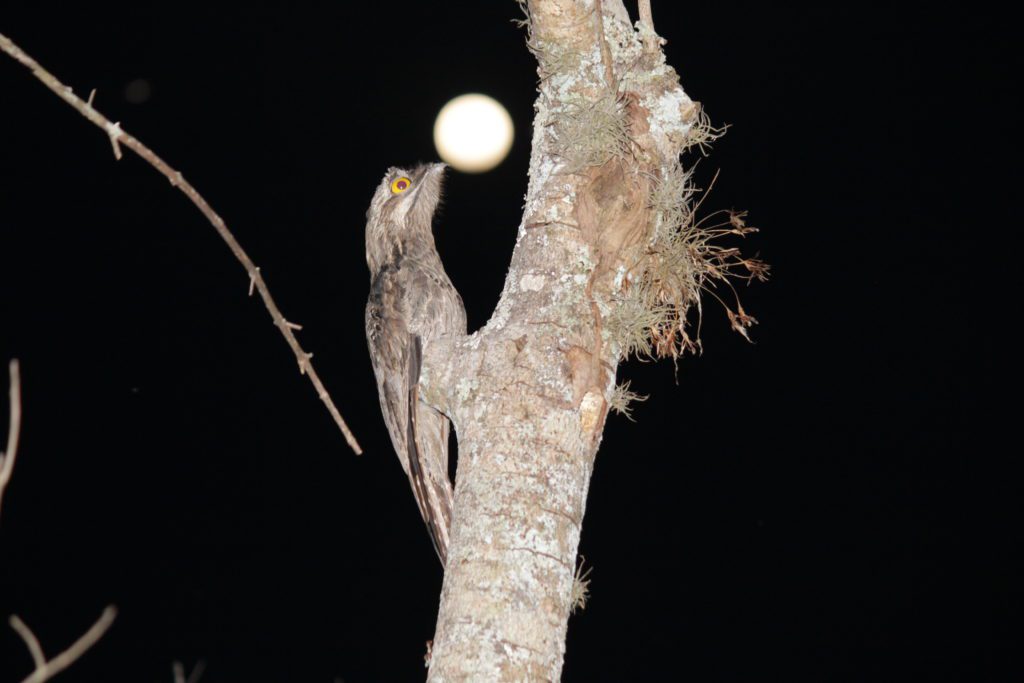
© Fernando Cipriani
| A team of scientists from Carnegie Museum of Natural History’s Powdermill Nature Reserve and Museu de Microbiologia do Instituto Butantan in Brazil recently documented migratory movements by a large and charismatic bird species long thought to be sedentary across its extensive South American range. The species under study, the Common Potoo, known scientifically as Nyctibius griseus, is an abundant, cryptically colored, nocturnal bird found in open woodland and savannah habitat from Nicaragua south to Uruguay and northern Argentina. The research findings, which were published in Ibis, the International Journal of Avian Studies, represent the first time any species of Potoos have been shown to migrate. According to Luke DeGroote, research coordinator at the Powdermill Avian Research Center, and the publication’s lead author, the lack of previous knowledge about the species’ seasonal movements is both surprising and understandable—surprising because the charismatic bird is popular among the public and understandable because the species is effectively camouflaged when at rest. As DeGroote explained in a blog post summarizing the study’s findings: “Their plumage, structure and posture allow them to masquerade as broken branches or stumps; a feat they sometimes attempt in the open, bold as brass on fenceposts and bottles. Notches in their eyelids allow them to watch intruders with eyes closed or nearly so.” The role of citizen science in the study is of particular significance. The research largely charted movement of Common Potoos southward on the continent to a temperate zone in the austral (Southern Hemisphere) summer to breed, and then their return to a more equatorial area (such as the Amazon) in the austral winter. Much of the data documenting the movements of Common Potoos came from eBird, an online reporting system coordinated by the Cornell Lab of Ornithology and the National Audubon Society, and WikiAves, a similar Brazilian public domain resource. As DeGroote explains, “Data from citizen scientists is becoming more robust and could allow scientists to uncover more hidden migrations, habitat requirements, status and trends to conserve birds within South America.” |
| About Powdermill Nature Reserve Powdermill Nature Reserve, the environmental research center of Carnegie Museum of Natural History, has been dedicated to its mission of research, education, and conservation for more than 50 years. It is a place for scientists, for students, and for families who are interested in the natural world. The Powdermill bird migration research program is home to the one of the longest continually running bird banding stations in the United States. A wide variety of public education programs serve children and adults. Researchers from around the world conduct diverse long- and short-term scientific studies in herpetology, botany, invertebrate zoology, and ornithology. The Powdermill Avian Research Center (PARC) is part of Powdermill Nature Reserve. |
